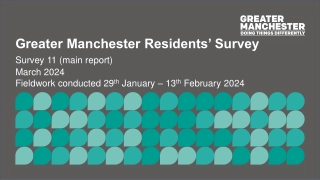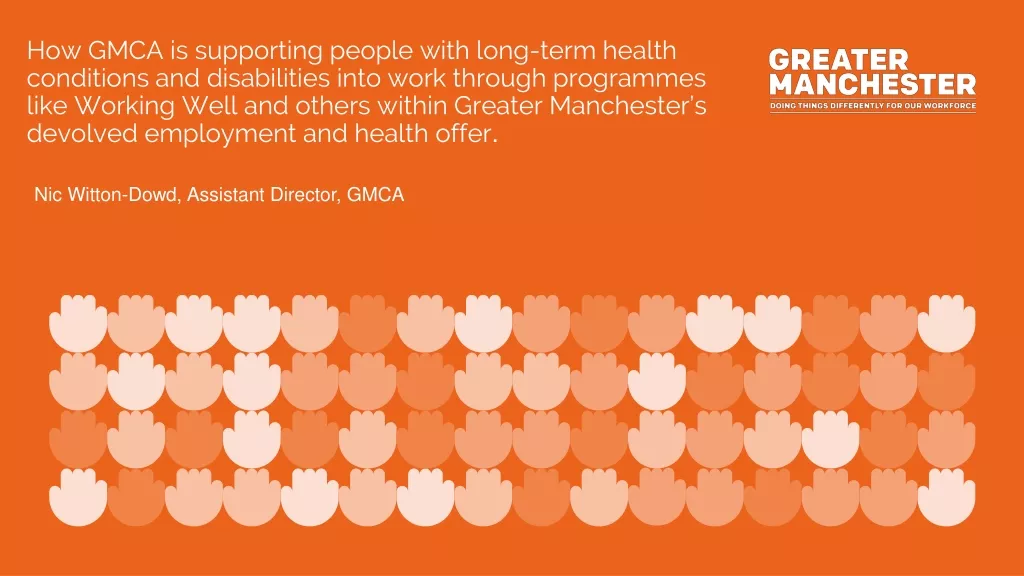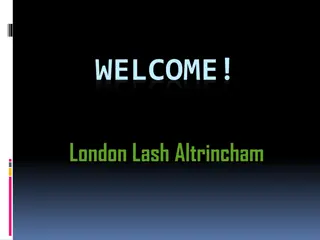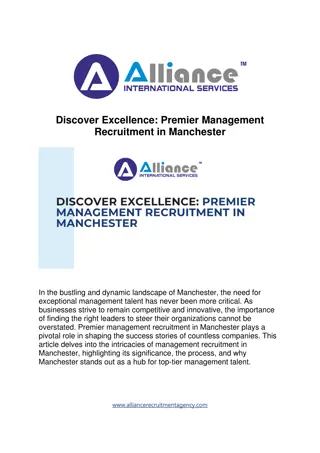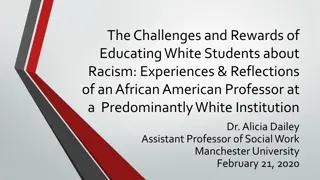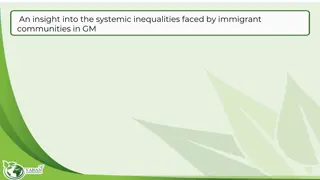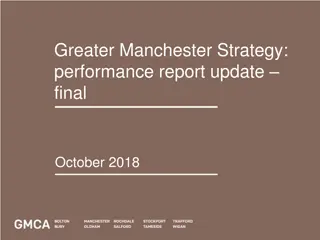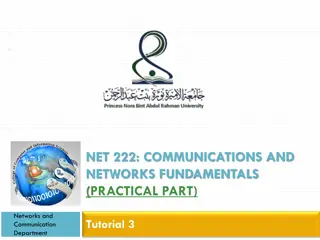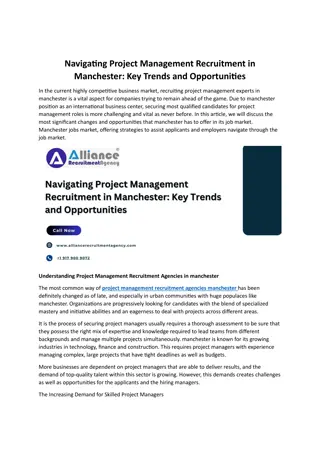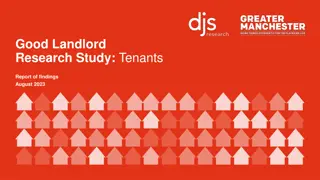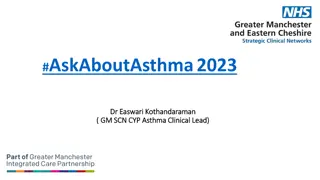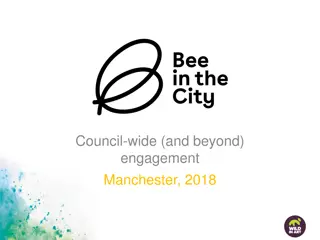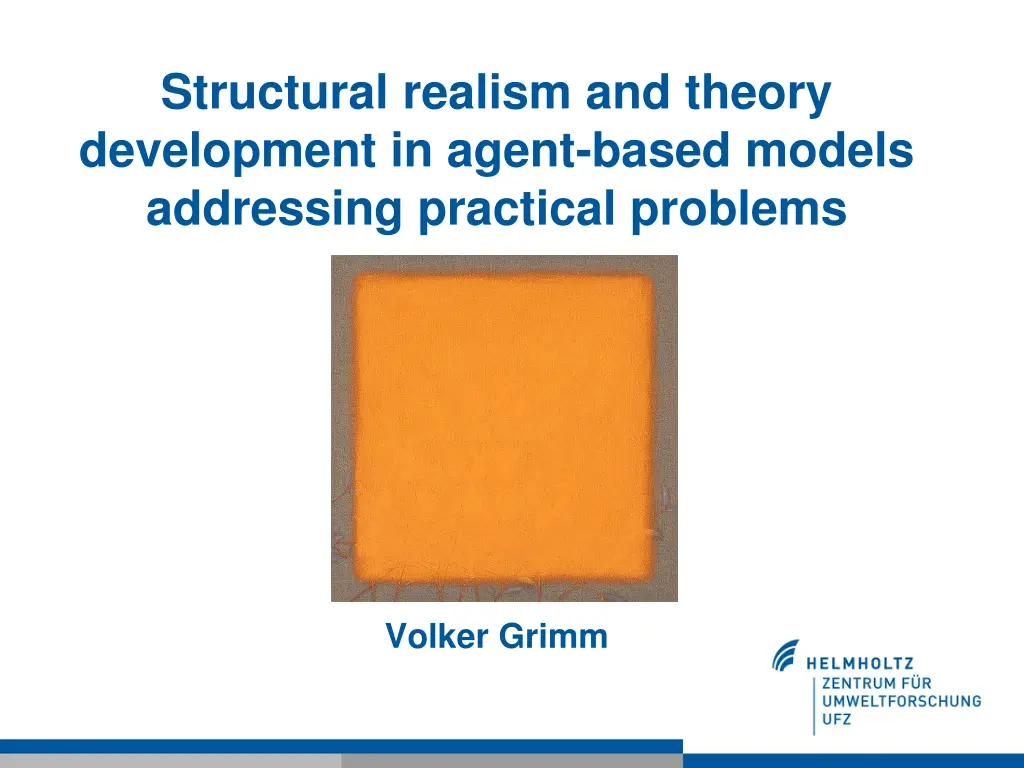
Exploring Structural Realism and Theory Development in Agent-Based Models
Dive into the world of agent-based models as Volker Grimm addresses practical problems through structural realism and theory development. Understand the significance of theory in scientific explanations, model verification, and validation processes. Explore the complexities of real-world systems and the essence of creating simplified representations for better understanding and prediction.
Download Presentation

Please find below an Image/Link to download the presentation.
The content on the website is provided AS IS for your information and personal use only. It may not be sold, licensed, or shared on other websites without obtaining consent from the author. If you encounter any issues during the download, it is possible that the publisher has removed the file from their server.
You are allowed to download the files provided on this website for personal or commercial use, subject to the condition that they are used lawfully. All files are the property of their respective owners.
The content on the website is provided AS IS for your information and personal use only. It may not be sold, licensed, or shared on other websites without obtaining consent from the author.
E N D
Presentation Transcript
Structural realism and theory development in agent-based models addressing practical problems Volker Grimm
ACKNOWLEDGEMENTS Steve Railsback Department of Ecological Modelling ( SA) at UFZ, Leipzig Teachers and inspirators: Christian Wissel, Janusz Uchmanski, Don DeAngelis Collaborators and students SEITE 2
What do I mean by theory? A scientific theory is a well-substantiated explanation of some aspect of the natural world that is acquired through the scientific method and repeatedly tested and confirmed through observation and experimentation. Agent-based complex systems science As used in everyday non-scientific speech, "theory" implies that something is an unsubstantiated and speculative guess, conjecture, or hypothesis; such a usage is the opposite of a scientific theory. Wikipedia 11.5.2016
THEORY IS GOOD FOR APPLICATION SEITE 4
Overview of this lecture Structural realism Pattern-oriented modelling Pattern-oriented theory development First principles Individual-based ecology
Idea underlying all modelling Real world/system too complex to understand or to predict behaviour Create a simplified representation, which only contains essentials with regard to a certain question or problem Understand and predict behaviour of this simplified representation Transfer this understanding and these predictions to the real system SEITE 6
Problem: verification and validation V1 the model mimics the real world well enough for its stated purpose (Giere, 1991) (Rykiel 1996, p. 230). V2 we can place confidence in inferences about the real system that are based on model results (Curry et al., 1989) (Rykiel 1996, p. 230) Note: Rykiel combines both aspects under one term, validation Rykiel 1996 SEITE 7
Hildenbrandt et al. 2010 SEITE 8
GENERATIVE MECHANISMS We want to make sure that our models are sufficiently good representations of their real counterparts. We want to learn about the real world We want to capture essential elements of a real system s internal organization We want to capture the generative mechanisms that generate the structure and behaviour of real systems SEITE 9
Predictive ecology Only if we capture the generative mechanisms sufficiently well will our predictions be good enough for new conditions Bossel (1992) contrasts descriptive models with real- structure models: The difference is that between the [ ] descriptive modelling of the motion of the hands of a clock, and the analysis and real-structure description of the mechanism of the clock; only the latter would be able to predict correctly what would happen if the pendulum were stopped or if the spring were not rewound. (p. 264). SEITE 10
STRUCTURAL REALISM Predictive systems models should be STRUCTURALLY REALISTIC Reproduce observed patterns for the right reasons, i.e., capture the internal organisation (across scales) of the real system Test: Independent predictions! Optimize model complexity ( sweet spot , middle ground ) Page 11
Models should reproduce patterns, not data General relationships that preferably hold across different instances of the same system Robust relationships Structures or processes that characterize a certain class of systems Related concept in economics: stylized facts SEITE 12
Spatial patterns in ecology http://www.gov.nf.ca/nfmuseum/images/empetrumnigrumlivedeadwaveforestmistakenpoint.jpg SEITE 13
Spatial patterns in marine ecology Tremblay et al. (unpublished) SEITE 14
More patterns SEITE 15 / 56
What scientists do with patterns Pattern: Beyond random variation Patterns contain information about internal organization We develop models that reproduce the pattern We infer from the mechanism built into the model the real system s organization We need to exploit ( squeeze ) the pattern
Problem with complex systems A single pattern may not contain enough information Ecologists tend to focus on (single) patterns observed at one level of observation Behaviour Population dynamics Community composition Ecosystem function
Monoscopic view Most approaches (and modellers) are not making the best use of the information (lemons) available
Multiscope view Take into account multiple patterns Observed at different scales and/or levels of organisation Make your model reproduce these patterns simultaneously Use each pattern as a filter to reject unacceptable submodels or parameterizations Pattern-oriented modelling (Grimm et al. 1996, 2005; Wiegand et al. 2003, 2004; Grimm and Railsback 2005, Railsback and Grimm 2012).
Example: Oystercatcher mortality (1976-1981) Pattern-oriented modelling (POM) Definition: Multi-criteria design, assessment, and parameterization of models of complex systems
Patterns as filters Multiple (3 or more) weak patterns may narrow down model structure better than one single strong pattern Cycles in small mammals ( strong ) Abundance within certain bounds Recovery after disturbance needs 10 years Territory size changes with abundance in a certain way SEITE 23
Patterns: Examples Red shift in spectra of galaxies and stars Atomic spectra Iridium layer: mass extinctions DNA: Chargaff s rule, x-ray diffraction patterns, tautomeric properties of building blocks Periodic system of elements Creative scientists (Sherlock Holmes) are using POM all the time SEITE 24
Pattern-oriented Modelling: Three elements 1. Design: Provide state variables (entities, processes) so that patterns observed in reality in principle also can emerge in the model 2. Model selection: Use multiple patterns for contrasting alternative (sub)models of certain adaptive behaviours 3. Parameterization: Use multiple patterns for determining entire sets of unknown parameters ( inverse modelling ) SEITE 25
Pattern-oriented Modelling: Three elements 1. Design: Provide state variables (entities, processes) so that patterns observed in reality in principle also can emerge in the model 2. Model selection: Use multiple patterns for contrasting alternative (sub)models of certain adaptive behaviours 3. Parameterization: Use multiple patterns for determining entire sets of unknown parameters ( inverse modelling ) Pattern-oriened theory development SEITE 26
Pattern-oriented theory development Theory in Individual-based Ecology is across-levels Theory=models of what individuals do that explain system dynamics (Capture enough essence of individual behavior to model the system) SEITE 27
THEORY DEVELOPMENT CYCLE Proposed theories: alternative traits for a key agent behavior Characteristic patterns of emergent behavior Empirical literature, research ABM How well does ABM reproduce observed patterns? SEITE 28
EXAMPLE: VULTURES AND CARCASSES Pattern: # of feeders at a carcass non-social chains of vultures local enhancement Dfoll/find-sear< Dfoll Searcher Searcher Searcher Dcar< ( Dunocc or Docc ) Dcar< Dunocc Follower Dfind-sear< Dland Finder Finder Finder Dcar< Docc Dcar= 0 Dcar= 0 Feeder Feeder Feeder Feeder Feeder Feeder Jackson et al. 2008. Biology Letters 4 Cortes-Avizanda A, Jovani R, Don zar JA, Grimm V. Ecology (2014) SEITE 29
EXAMPLE: VULTURES AND CARCASSES non-social chains of vultures local enhancement Cortes-Avizanda, Jovani, Don zar & Grimm. 2014. Ecology. SEITE 30
EXAMPLE: VULTURES AND CARCASSES 0.6 1.0 experimental carcasses 'non-social' 0.5 0.8 0.4 0.6 0.3 0.4 0.2 % carcasses 0.2 0.1 0.0 0.0 0.5 'chains of vultures' 0.4 'local enhancement' 0.4 0.3 0.3 0.2 0.2 0.1 0.1 0.0 0.0 0 200 400 600 800 1000 0 200 400 600 800 1000 # feeders Cortes-Avizanda, Jovani, Don zar & Grimm. 2014. Ecology. SEITE 31
EXAMPLE: VULTURES AND CARCASSES 80 2500 experimental carcasses 70 Minimum # feeders Maximum # feeders 2000 1,000 simulations 60 50 1500 40 30 1000 20 500 10 0 0 200 300 250 Mean # feeders Median # feeders 150 200 100 150 100 50 50 0 0 'non-social' 'non-social' 'chains of vultures' 'chains of vultures' 'local enhancement' 'local enhancement' Hypothesis Cortes-Avizanda, Jovani, Don zar & Grimm. 2014. Ecology. SEITE 32
FIRST PRINCIPLES Often, we base our theories on ad hoc assumptions. Better for pattern-oriented theory development: Start from first principles Physics, chemistry Fitness seeking SEITE 33
First principles: example Benjamin Martin (PhD student, UFZ) Daphnia population dynamics in laboratory Effects of pesticides My idea: Start from existing model Ben: That model is good, but everything is based on empirical (imposed, calibrated) relationships I want to to do something more generic I want to try Dynamic Budget Theory (DEB) SEITE 34
DEB Kooijman 2010 where and SEITE 35
DEB Food Maintenance
DEB-IBM: Generic NetLogo program Martin et al. (2012) Methods Ecology and Evolution Population Environment Individual IBM DEB Growth Reproduction Survival Density Size distribution Toxicants Food Temperature DEB-IBM
Parameterization Growth Cumulative reproduction 6 140 cumulative offspring per female 120 5 body length (mm) 100 4 80 3 60 2 40 1 20 0 0 0 10 20 time (d) 30 40 0 5 10 time (d) 15 20 25
We could reproduce not only population density at one food level, but density and size distribution for multiple food levels and toxicant expsoure Low food (0.5mgC d-1) High food (1.3mgC d-1) 500 500 Total Total Neonates Neonates 400 400 300 300 200 200 100 100 Abundance Abundance 0 0 500 500 Juveniles Juveniles Adults Adults 400 400 300 300 200 200 100 100 0 0 0 10 20 30 40 0 10 20 30 40 0 10 20 30 40 0 10 20 30 40 Day Day Martin et al. 2013. Am. Nat. Data from Preuss et al. 2009
ANOTHER INDEPENDENT PREDICTION Martin, Jager, Nisbet, Preuss & Grimm. 2013. Am. Nat. SEITE 40 / 56
Ecology (populations, communities, ecosystems) Emergent Population growth rate, Imposed Empirical Specific environment Vital rates, b & d Wide range of environmental conditions Adaptive behavior (IBM) Page 41
THEORIES OF WHAT Generic models of interaction: Zone-of-influence approach Forest gap models: vertical competition for light (JABOWA) Size-based trophic, trait-mediated Generic models of behaviours Foraging Habitat selection Home range Generic models of life history Bioenergetic models Ontogenetic Growth Model Dynamic Energy Budget theory SEITE 42
EXAMPLE: TROUT HABITAT SELECTION SEITE 43
GENERAL THEORY Railsback and Harvey 2013. Trends Ecol. Evolution. SEITE 44
So far: Structural realism Pattern-oriented modelling Pattern-oriented theory development First principles Individual-based ecology SEITE 45
INDIVIDUAL-BASED ECOLOGY 2015. BioScience 65: 140-150 SEITE 46
INDIVIDUAL-BASED ECOLOGY SEITE 47
Phase 1: Conceptualization SEITE 48
Phase 2: Implementation SEITE 49
Phase 3: Diversification SEITE 50

